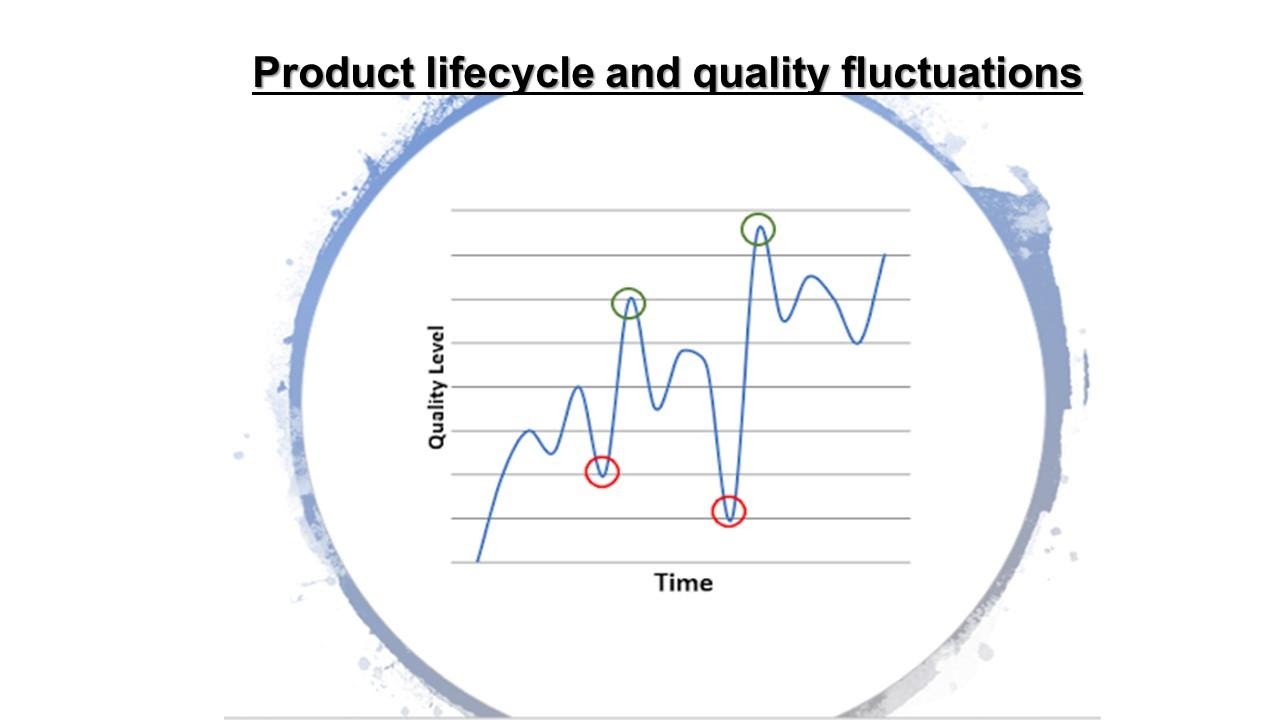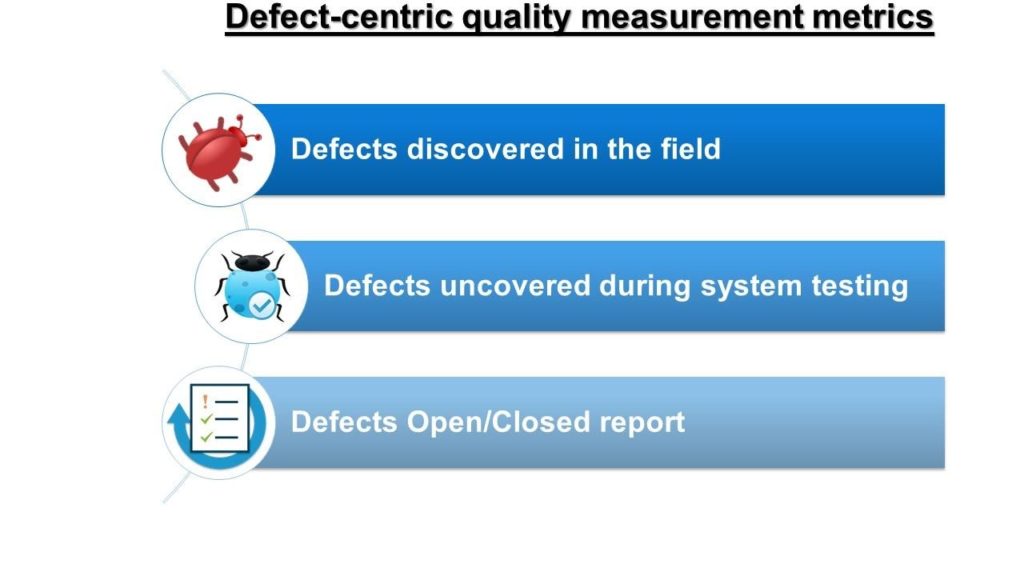In the world of agile development, maintaining high levels of quality can become a major headache, due to its incremental and iterative approach. There are times when a time crunch may lead to certain compromises which allow a minuscule amount of defects to reach the deployment stage. Multiple releases of the product may not be at the same level of quality over a period of time.
Let us understand how it happens with the aid of the following figure, which depicts how the quality level of an organization can vary over time for a particular product or service.

The first red circle represents when the quality gets really bad. That mobilizes the teams and there is a concerted effort to improve and it leads to quality hitting the first green circle, i.e. significant improvement. However, if the organization’s QA process is not well defined, then the quality level starts dropping again once the crisis is over. Accrued technical debts lead to the second crisis point. Once again it triggers a reactive approach by putting in efforts for damage control which results in the second green circle in the above figure. And this cycle just keeps repeating till some concrete steps are taken.
However, the problem is that as the surface area of the product increases, that is, as many more features are created, over time the quality swings become larger in magnitude. Eventually, you reach a point where the only solution is to archive the current version of the product or service and create a brand-new version. It is also an opportunity to introspect and check if something is missing in the quality assurance policies and processes of the organization.
Ideally, the quality fluctuations should be managed by having well-defined strategies for testing and analyzing the test results. The next section covers three defect-centric metrics that can prove useful in quality measurement and assurance.

Defects discovered in the field
These are the defects found by users of the system and are reported back to the company. This metric sets the red flag because:
- Defects reported in the field are very expensive to triage and fix
- Users tend to report only severe defects
- When you start seeing a lot of severe defects from multiple customers it is too late to pay your technical debts
This metric is an indicator of major quality problems within the organization’s QA operations. It triggers a red alert that the quality management process needs a major overhauling. The process team, development team, and the QA need to swing into action to identify where they are lacking and address the problem areas, or in some cases completely revamp the process. However, this can often lead to a crisis management reactive culture that oscillates from a major focus on quality to lackadaisical as soon as the customer crises are handled. Ideally, QA operations need to be set on a solid foundation of quality goals.
Defects found during system testing
This metric can be an excellent predictor of lurking quality problems. However, it requires consistent and intense software testing to be carried out on the product or service for every new feature or change.
If the number of priority 1 defects being found is increasing, or the net defects found are increasing, it means that there is a major problem and if not nipped in the bud, it can cascade further into a major catastrophe. Sometimes, these bugs indicate that there might be underlying issues that need to be identified and addressed before it is too late.Read More about : Ai testing


No comments:
Post a Comment